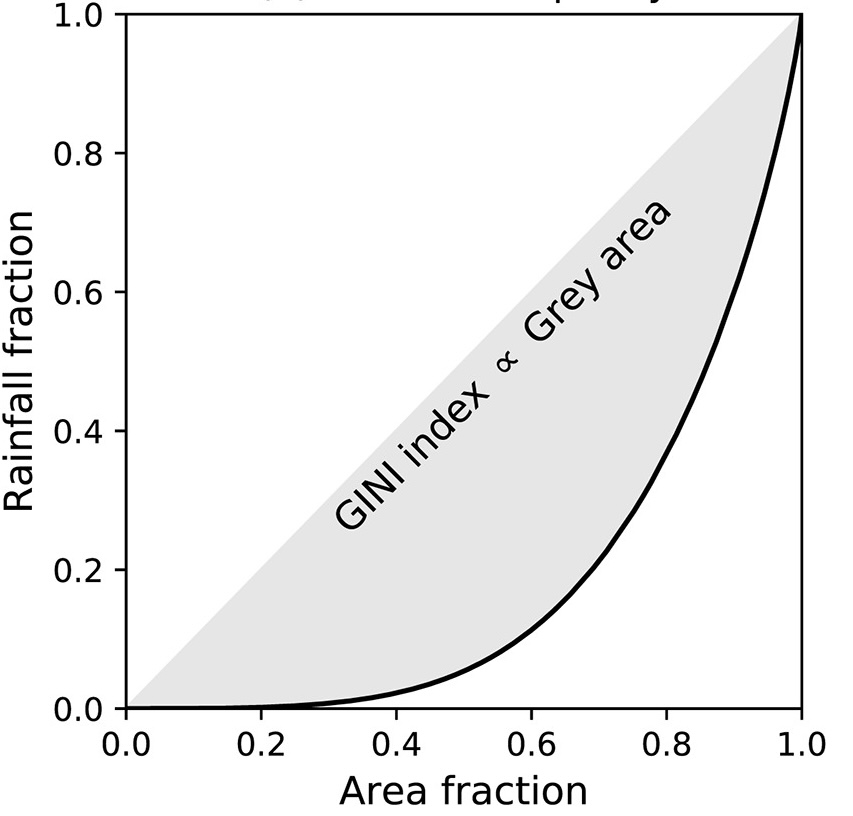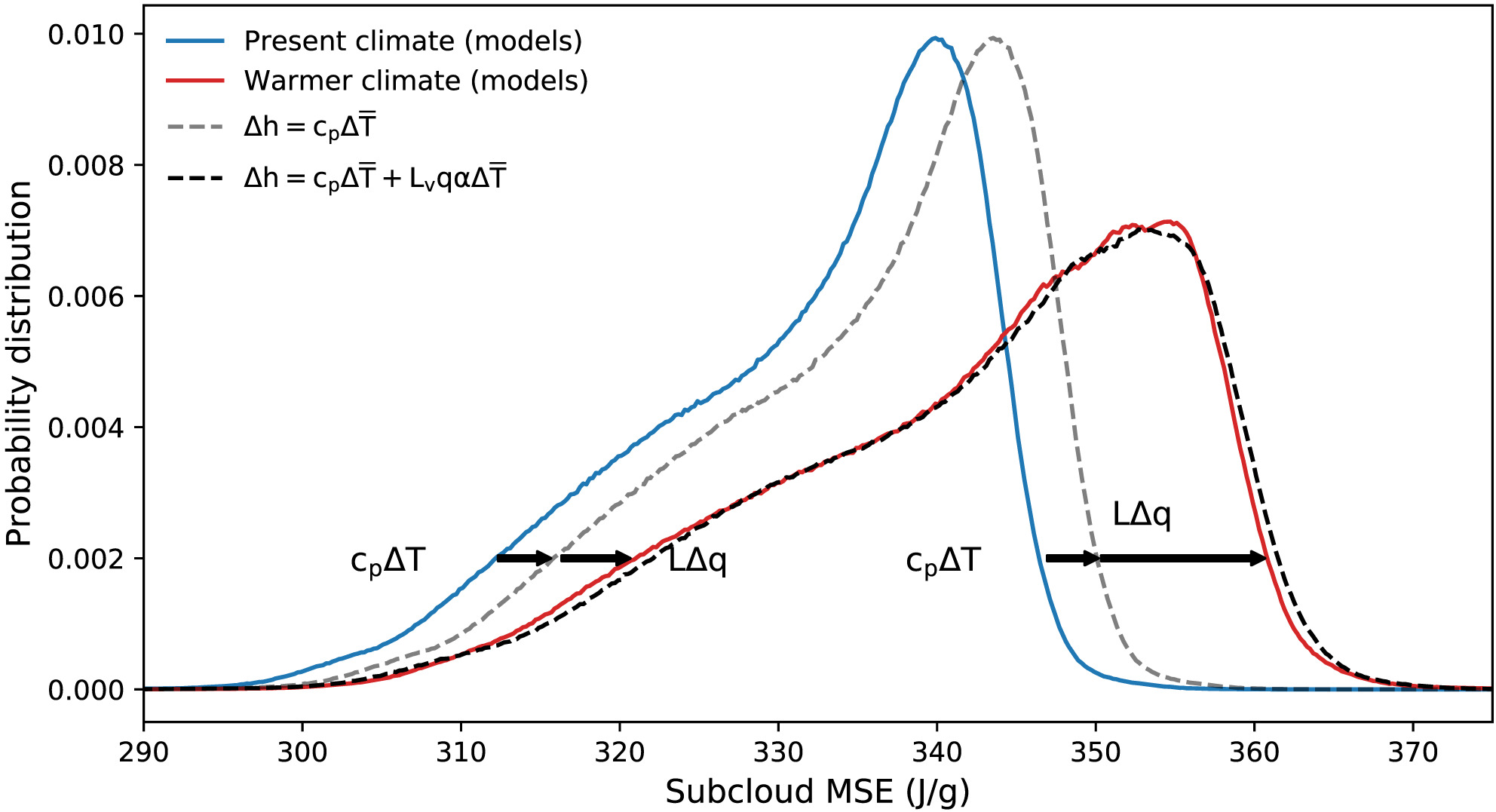Why will tropical rainfall become more unevenly distributed in space?
The global mean precipitation will increase by about 2% per degree of global warming. This increase in rainfall is not distributed uniformally across the globe. Prior work has found that regions that are already humid and energetic will become comparatively more so with global warming, and the unevenness of precipitation distribution in the tropics will amplify. This is broadly consistent with physical mechanisms including the “dry-get-drier-wet-get-wetter” mechanism and the “upped-ante” mechanism. This aligns with known physical mechanisms, including the “dry-get-drier-wet-get-wetter” and the “upped-ante” mechanisms. Our work explores this topic from a slightly different angle by examining the probability distribution of monthly rainfall across tropical grid points, rather than from a fixed location perspective.
To effectively measure the unevenness in a distribution as non-normal as rainfall, we have adopted the Gini Index, a concept originally from economics used to estimate how far a country’s wealth or income distribution deviates from an equal distribution. While the Gini Index is not a flawless metric, it is effective for analyzing non-negative and heavy-tailed distributions like rainfall. A fun fact: the Gini Index of tropical monthly rainfall is higher (indicating greater evenness) than that of the country with the greatest income inequality!

We explained the change in the Gini Index of rainfall using the subcloud MSE difference between the convective regions and the tropical mean. This is consistent with and similar to prior work, specifically the “upped-ante mechanism.” However, an interesting result that emerges from our work is that the GCM-simulated change in the subcloud MSE distribution can be rather accurately reproduced by a simple scaling. This provided insights into the widening of the distribution—the key factor being that the Clausius-Clapeyron relationship amplifies specific humidity gradients and, therefore, subcloud MSE gradients.

References
2019
- Mechanism for increasing tropical rainfall unevenness with global warmingGeophysical Research Letters, 2019AGU Eos: Editor’s Highlight–Understanding Tropical Rainfall Projections Under Climate Change